When you are making a casserole or even a baked dessert, it can be confusing at times to know which size casserole dish you should use. These versatile dishes are handy in the kitchen for cooking and food storage, but should you be stocked with more than just one size or shape? We've researched casserole dish dimensions based on size and volume to help you find the right-sized bakeware to equip your kitchen.
Casserole dishes are usually made of glass, ceramic, stoneware, or cast iron. They come in several shapes, such as round, square, and rectangular (or oblong). They also come in many sizes, and your choice of shape and size depends on what dish you are cooking and how many people you are serving. Casserole dish sizes include:
- 1-quart dish (4 cups) – 8" x 6" x 1 ½" (round)
- 2-quart dish (8 cups) – (oblong)
- 2½-quart dish (10 cups) – 9" x 9" (square)
- 3-quart dish (12 cups) – 13" x 9" x 2" (oblong)
- 4-quart dish (16 cups) – 14" x 10" x 2" (oblong)
- 5-quart dish (20 cups) - 11" x 15" (oblong)
Now that you know the various sizes and volumes, let’s look at what type of food is typically made in each and how many people the casserole will serve. You'll want to keep reading because we'll also discuss whether it's best to use casserole dishes with or without the lid, whether all casserole dishes can go into the oven, and suggest some alternatives to use if you don't have a casserole dish handy.
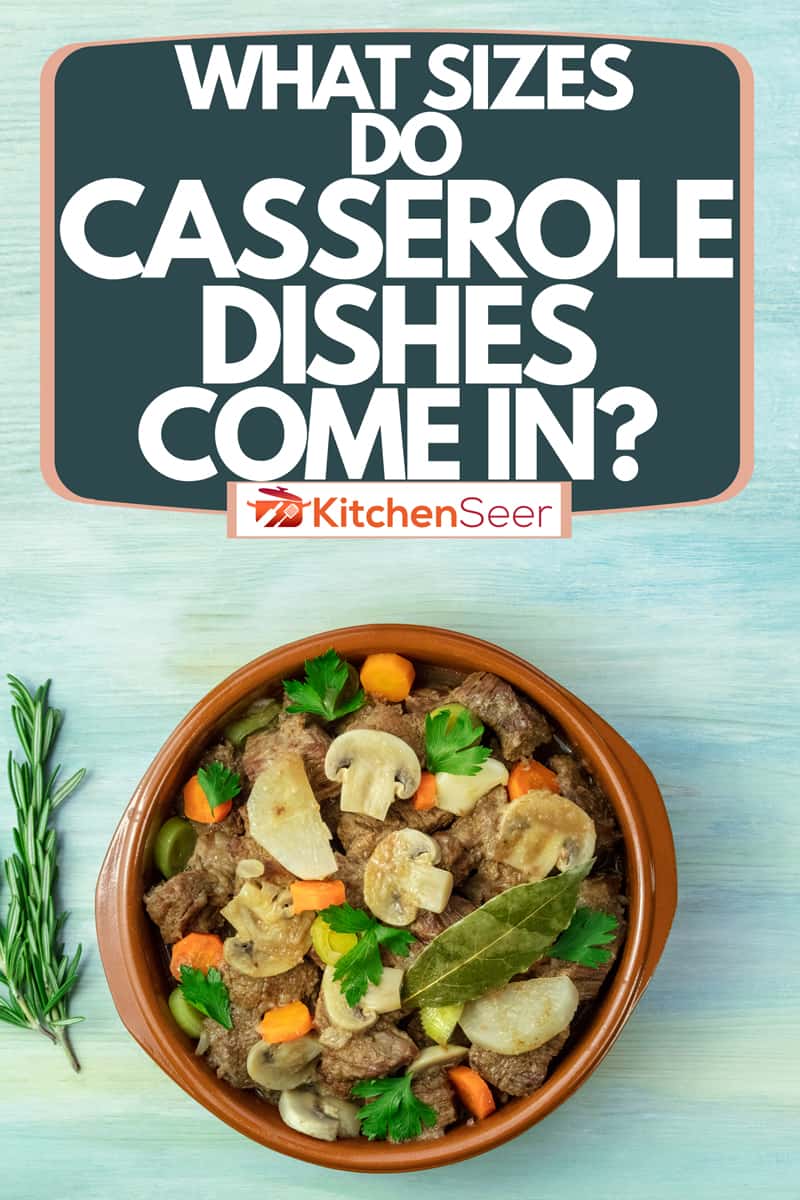
Casserole Dish Sizes, Meals, and Serving Size
What is the best size casserole dish? As you've just seen, you certainly have size and shape options for casserole bakeware, but the answer really depends on your recipe, cooking method, and serving size.
1-Quart Casserole Dish
A 1-quart casserole dish can be used to make your morning oatmeal, some popcorn, and steam vegetables. These dishes typically serve one to two people. They are small enough to toss into the microwave for a quick reheat or completely cook a meal in a hurry (just be sure it is microwave-safe material). They can double as a food storage container to keep leftovers in the fridge.
Click here to see this dish at Amazon.
2-Quart Casserole Dish
A 2-quart, oblong casserole dish can be used for savory sides of scalloped potatoes or delectable desserts like brownies. You will likely produce four servings from this size casserole dish. A medium-size, this bakeware can also double as food storage with a sealable lid. Consider pre-baking your casserole or side and freezing for longer-term storage right in the pan after it cools.
Click here to see this dish at Amazon.
2 ½-Quart Casserole Dish
A 2 1/2-quart, square casserole dish can be used to make desserts such as fudge, cakes, or cookie bars. This size also makes a great dish for baking sweetbreads and slow-rise loaves of bread. While you might be tempted to whip up a side dish or breakfast casserole for a meal in a 2 1/2-quart casserole dish, although stout, your portions will likely serve six to eight servings.
Click here to see this dish at Amazon.
3-Quart Casserole Dish
A 3-quart casserole dish can make baked macaroni and cheese, baked ziti, or pot-pie. Use it for desserts like cake or trifle when panning for a larger event. These dishes typically serve hardy portions to feed between 10 and 12 people.
Click here to see this dish at Amazon.
4-Quart Casserole Dish
A 4-quart casserole dish can be used to make a potluck dinner, such as chicken noodle casserole or high-stacked lasagna. These dishes typically feed 12 to 15 people.
Click here to see this dish at Amazon.
5-Quart Casserole Dish
Bring out the 5-quart casserole dish to prepare for large gatherings when serving 15 or more people. You can use this size bakeware for extraordinary desserts, sweetbreads, and casseroles. Use this size dish for only serving if you've made a large portion of food elsewhere and want an appealing and sturdy vessel to transport it to the buffet.
Click here to see this dish at Amazon.
Does A Casserole Dish Need A Lid?
Generally, the recipe will specify if you should cook your casserole covered or uncovered. However, there is no standard rule. What is important to note is that uncovered, baked food has a tendency to dry out. But that's not necessarily a bad thing. Uncovered casseroles promote browning and crisping. Covering food entraps moisture, so your end result will likely be juicier.
Most casserole dishes come with lids, but if yours does not, or you've lost track of the lid for an older dish, you can use either aluminum foil or parchment paper to cover during baking.
Can All Casserole Dishes Go In The Oven?
Yes, that is the beauty of casserole dishes! They are made to withstand extreme heat so therefore are safe to be used in your oven. Most casserole dishes are safe to use in the microwave, dishwasher, and even the freezer but check with the dish's manufacturer first. Some manufacturers even provide a warranty for the dishes in case of cracks or breakage.
Many glass casserole dishes are made from borosilicate glass, which is a special type of tempered glass made to withstand extreme temperature changes without breaking or cracking. If you are looking for a glass casserole dish, try to find one made from this.
We've discussed using casserole dishes for food storage either in the fridge or freezer. Make sure you allow the dish to cool completely, especially if it is glass, stoneware, or ceramic material, before relocating to a cold location. Cooling can prevent cracks resulting from extreme temperature changes.
What Can You Use Instead Of A Casserole Dish?
Baking Pans
Baking pans are an excellent substitute for casserole dishes. They often have similar dimensions and shapes, made with efficient materials like glass, metal, or ceramic. You can substitute a:
- 9" square baking pan for a 1 1/2-quart casserole dish,
- 11" x 7" baking pan for a 2-quart casserole dish, or a
- 13" x 9" baking pan for a 3-quart casserole dish.
Click here to see these 9" x 13" pans on Amazon.
Loaf Pans
Loaf pans (9" x 5") are a handy substitute for smaller, 1 1/2-quart casserole dishes. Usually made from a highly conductive metal, use caution when baking casseroles in loaf pans because your food might dry out in the oven since the pan readily gets hot. Covering loaf pans is a safe bet for making casseroles in this alternative. You might also need to alter baking time to cook thoroughly because loaf pans are slightly deeper than most similarly sized casserole dishes.
Click here to see this loaf pan on Amazon.
Pie Plates
Use a pie plate, typically between 8" and 12" diameter, to substitute when in need of a 1-quart to 2-quart sized casserole dish. Pie plates are shallow, so you might want to reduce the liquid content in your casserole and cover while baking to prevent spills. Made from glass or metal, pie plates will heat efficiently to cook your casserole in record time.
Click here to see this 9" pie plate (lid NOT oven-safe!) on Amazon.
Dutch Ovens
A Dutch oven is not only an ideal substitute for a casserole dish, but this versatile bakeware can be a valuable piece in your kitchen to use on the stovetop or in the oven. Dutch ovens are typically made from cast iron or ceramic, so they heat slowly but evenly. You'll have the option to cover with an accompanying lid or bake your casserole uncovered based on your preference. Check out "Where to Buy a Dutch Oven? [Top 30 Online Stores]."
Click here to see this 6-quart Dutch oven on Amazon.
We've got even more casserole dish alternatives at "What Can I Use Instead of a Casserole Dish? [5 Alternatives]."
Final Thoughts
Casserole dishes are versatile bakeware; whether making a single-serve portion or feeding an entire family, you can easily have the right size and shape available in your kitchen. Most dishes come with lids and are made from materials that can be used in the microwave, oven, and even refrigerator or freezer for food storage. Now that you know the options grab the right size, and start cooking!











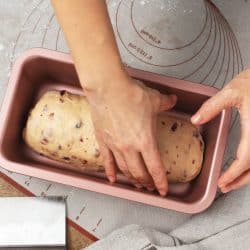
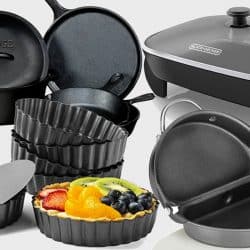
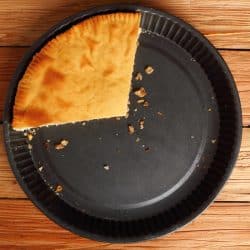

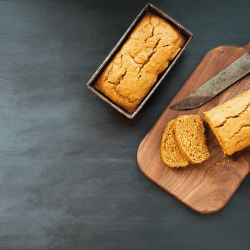
![A woman making a delicious pie in her kitchen, How To Put Dough In A Pie Pan [A Complete Guide]](https://kitchenseer.com/wp-content/uploads/2021/08/A-woman-making-a-delicious-pie-in-her-kitchen-250x250.jpg)